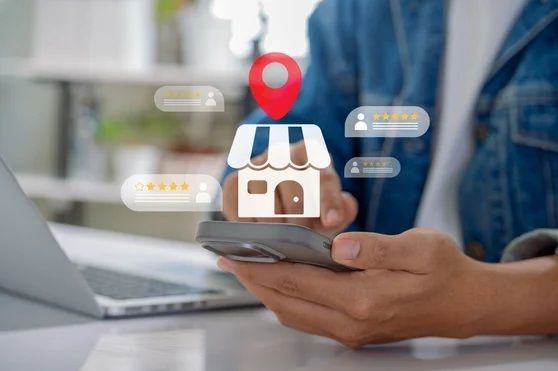
Summary: Buy now pay later (BNPL), conversational commerce, and augmented reality (AR) are all current trends in ecommerce marketing. You can learn more about them in our latest blog!
Today, there are multiple channels where you can engage with customers and convert the relationship to sales. And ecommerce marketing can offer great opportunities to businesses worldwide. When you combine that with the knowledge of current ecommerce trends, you will be ready for the next ecommerce chapter, which includes:
- Create a seamless customer experience across all platforms
- Meet your customers where they are
What are the ecommerce trends you need to take note of?
Buy Now, Pay Later
Buy Now Pay Later (BNPL) is not new in the world of retail and financing, but with the rise of ecommerce came the digital version of BNPL that serves as an alternative to credit cards, PayPal, and other types of payment. BNPL allows shoppers to buy a product and pay the cost in a predetermined number of installments over a period of time. Most shoppers choosing this payment alternative are Gen Z and Millennials, and current BNPL suppliers include Klarna and Affirm.
Retailers benefit from increased sales from customers that would not have purchased from them otherwise, and consumers get the products they want immediately. Other benefits that Buy Now Pay Later offers to retailers include:
- It attracts new customers
- It offers a better customer experience
- It leads to higher customer lifetime value (LTV)
Serverless Architecture
Originally launched by Amazon, one of the biggest ecommerce platforms, serverless architecture is a way to build and run applications and services without managing the infrastructure. Your information is in the “cloud”, and a managed services provider is responsible for ensuring that the servers function optimally. Examples of serverless architecture systems include AWS Lambda, Microsoft Azure Functions, and Google Cloud Functions.
The main benefit to leveraging serverless architecture is cost-effectiveness, as you are not paying for the cost of running the servers. Maintenance is the responsibility of the service provider, and your marketing and design team can focus on improving the customer experience on your website rather than performing maintenance on server architecture. Unfortunately, it’s not all positive – workload limitations and security risks are some of the negatives that come with using cloud platforms for ecommerce.
Conversion Rate Optimization
As an ecommerce business, you know it is not just about getting more traffic but about converting the traffic you do have into sales. Conversion rate optimization (CRO) aims to improve the shopping experience, whether on landing pages, category pages, or any other customer touchpoint. How can you increase the CRO on your ecommerce platform? Try the following:
- Offer free delivery
- Use high-quality videos and images on your product pages
- Structure your site so customers can easily find what they want
- Provide detailed product descriptions
- Make your check-out process easy to understand
- Regularly test and adapt your ecommerce check-out process
- Let customers know their information is safe in your ecommerce store
- Encourage consumer reviews and testimonials
Conversational Commerce
Another trend is conversational commerce. It is growing within ecommerce marketing and can be used to suggest related products, answer common questions, direct leads, or make announcements. Conversational commerce aims to engage customers in a personalized, helpful way that moves them faster through the sales funnel. It can be delivered to a potential customer via any of the following channels:
- Chatbots
- Chat app
- Voice assistant
- Messaging platform
Successful ecommerce brands go where their customers are. WhatsApp, with its nearly 2 billion active users, is one of the ways conversational commerce can be taken directly to the shopper. Search engine optimization (SEO)-friendly content can be impersonal when done incorrectly. Still, the power of conversational commerce is that it closes the gap between SEO and matching content to user preferences.
Headless CMS
Content management systems (CMS) are a standard tool in digital marketing. Traditionally, CMS organized content in webpage-oriented frameworks, making it difficult to use the same content for other digital platforms or software. Evolving digital channels and devices require a more flexible content management system, resulting in headless CMS.
A headless system is any type of back-end content management system where the content repository (body) is separated from the presentation layer (head). This way, the content stays in one place but can be used across any front end. Headless CMS is key to omnichannel strategies and allows businesses to enhance their platform’s performance quickly by adapting to consumer demands, traffic spikes, or increased sales volume.
Shoppable Livestreams
The latest ecommerce trend involves shoppable livestreams. Remember when we used to spend hours watching the Home Shopping Channel? As with Buy Now Pay Later, live shopping is the digital version of an old, familiar shopping experience—but now, video is taking over from television! Supporters of shoppable livestreams say they prefer engaging with products via video rather than pictures. And with the pandemic, it has become a safer way to shop that is also very convenient because you can buy from the comfort of your home.
How does it work? Basically, shoppers interact with a presenter (often a social media influencer) in real-time via a video livestream event. Shoppers ask questions and get to see how the presenter interacts with the product being sold.
Why should you use shoppable livestreams? Shoppable livestreams showcase your products where your customers interact online. And they link directly to a brand’s ecommerce platform, thereby driving sales.
Augmented Reality
A trend that is leading in the metaverse is augmented reality. Before we discuss how augmented reality is used in ecommerce, let’s clarify the difference between augmented reality (AR) and virtual reality (VR):
- Virtual reality (VR) uses computer technology to create a simulated environment;
- Augmented reality (AR) simulates artificial objects in a real environment.
How does augmented reality support ecommerce? By allowing customers to preview products and experience services in their own environment before they elect to make a purchase. It bridges the gap between shopping at a physical location and shopping online.
How is ecommerce using augmented reality?
Virtual try-on. Customers use an application to see if clothes will fit.
Preview placement. An application is used to place a piece of furniture in a photo of the customer’s living room.
Interactive user manuals.
Social media filters. As seen on Instagram Stories and Snapchat.
Omnichannel Experience
The omnichannel experience is all about being where your customers are. Whether you use paid advertising such as pay-per-click (PPC) to engage them on Google, or any of the social media platforms, customers expect to engage with their favorite brand everywhere. And they want to move seamlessly through the omnichannel shopping experience.
The customer journey used to be simple: you would go to a brick-and-mortar store and buy what you want. Now, people can physically be in the store but at the same time also be on the brand’s social media page to make a purchase that is delivered to their home. They can make a decision after looking at the product reviews on a website and chatting with their friends about it. Ultimately, customers want to move easily between platforms and devices when shopping, and ecommerce businesses must keep up.
WSI is a digital marketing agency you can trust. We have an extensive network of industry thought leaders that keep our clients’ solutions fresh and relevant. WSI has also twice been named Top Agency by the Web Marketing Association (WMA). We take pride in our knowledge and expertise. Do you want to work with us? Then contact WSI today.
About the Author
Rick spent 20 years in the insurance industry in finance, primarily developing reporting platforms for B & C stakeholders. His ability to speak to consumers of data (managers and analysts) and translate their needs to programmers led him to start his own digital marketing agency in 2004 to develop data driven solutions for business owners.
The Best Digital Marketing Insight and Advice
We are committed to protecting your privacy. For more info, please review our Privacy and Cookie Policies. You may unsubscribe at any time.
Don’t stop the learning now!


